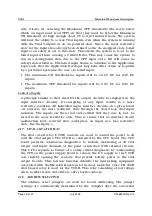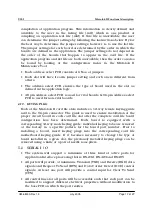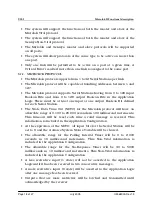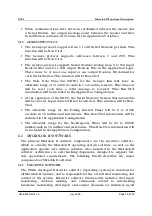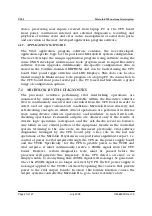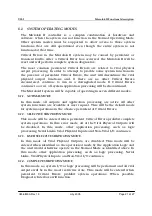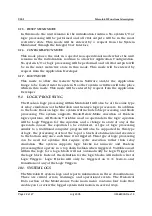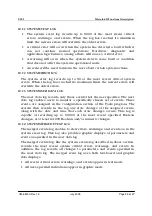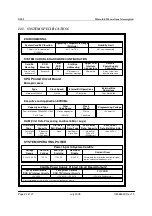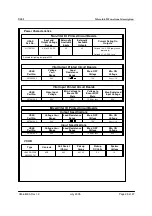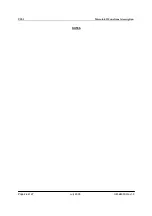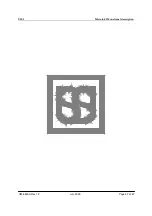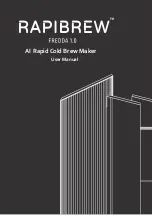
USSI Microlok II Functional description
Page 22 of 27 July 2005 UM-6800A Rev1.3
8.1.5. RESET MENU MODE
In this mode, the unit remains in the initialisation routines. No system I/O or
logic processing will be performed and all vital outputs will be in the most
restrictive state. This mode will be entered by a request from the System
Maintainer through the Integral User Interface.
8.1.6. CONFIGURATION MODE
This mode places the unit in a special non-operational mode where the unit
remains in the initialisation routines to allow for Application Configuration.
No system I/O or logic processing will be performed and all vital outputs will
be in the most restrictive state in this mode. This mode will be entered by
request from the Application Developer.
8.1.7. BOOT MODE
This mode to allow the Generic System Software and/or the Application
Image to be loaded into the system. No other system activities will take place
while in this mode. This mode will be entered by request from the Application
Developer.
9.1. LOGIC PROCESSING
The Boolean logic processing within Microlok II will also be of the same type
of relay emulation as the Microlok and Genisys logic processors. In addition
to the basic Boolean logic, the system will include table processing and block
processing. The system supports Break-Before-Make execution of Boolean
logic equations. All Boolean Variables used as operands in the logic equation
will be Logic Triggers for the equation and a change in state of any of the
operands causes the equation to be evaluated. A type of logic processing
similar to a traditional computer program will also be supported. In this type
of logic, the processing starts at the top of a block of statements and executes
to the bottom only once each time it is triggered. This type of logic processing
can be used for systems that require cyclic execution rather than relay
emulation. The system supports logic blocks for numeric and Boolean
processing that operate in a top down fashion when triggered. Variables used
within the logic for a logic block will not automatically be Logic Triggers for
the logic block. Instead, the definition for the logic blocks will include a list of
Logic Triggers. Logic Blocks will only be triggered on 0->1 (zero-to-one)
transitions of any of the Logic Triggers.
10.1. SYSTEM LOGS
The Microlok II system logs and reports information in three classifications.
These are critical errors, warnings, and operational events. The Historical
Data section of the Maintenance Tools main menu contains four tools that
enable you to review the logged system information in several ways.









